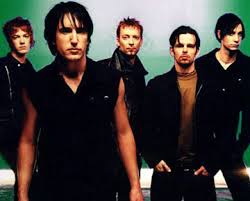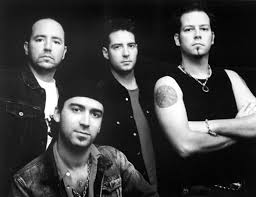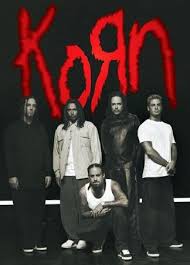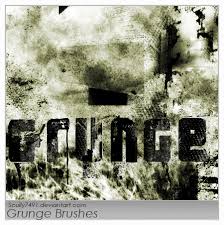Contemporary rock bands owe a debt to legendary artists like the Beatles and the Rolling Stones, but a collection of more recent groups created the thematic and sonic blueprint that’s still being followed today. Here is a list of the most essential rock bands – if you love a current group, there’s a good chance they were influenced by at least one of these artists.
1. NIRVANA
Frontman Kurt Cobain and bassist Krist Novoselic went through a series of drummers before they found their man: former Scream member Dave Grohl. With their trio in place, they recorded
Nevermind, an album that went on to sell more than 25 million copies worldwide. Nirvana represent a bridge from the arena rock of the ‘70s and ‘80s to the alternative and contemporary rock of the ‘90s to the present. Any modern-day songwriter who details his personal anguish with accessible, passionate rock music is following in Cobain’s massive footprints.
2. PEARL JAM
Pearl Jam singer Eddie Vedder is a lethal combination of manly good looks, socially-conscious lyricist and volcanic vocalist. Embodying strength and vulnerability in equal measure, Vedder became the model for impassioned frontmen, and his booming baritone can be heard in the deliveries of everyone from Chris Daughtry to Nickelback’s Chad Kroeger. Pearl Jam’s brand of heavy, melodic rock encompasses sensitive ballads and enraged protest songs, setting the sonic framework for their contemporaries to continue exploring. Perhaps just as importantly, the band not only discuss politics in their music but also speak out for the causes they support.
3. FOO FIGHTERS
When Nirvana broke up, who would have given odds that Dave Grohl’s
next band would last longer than his old one did? The longevity of the Foo Fighters can be attributed to many things, but primarily it’s due to Grohl’s skill at crafting radio-ready rock songs. Though he sports a fiery urgency reminiscent of Nirvana’s best work, Grohl injects a likable everyman quality into his material, making his lost-love laments feel like the musings of your typical Joe. Foo Fighters specialize in songs of self-reliance that pair hopeful lyrics with surging guitars and assertive drums, and their fans respond to the hard-earned optimism of Grohl’s albums.
4. SOUNDGARDEN
For years, Soundgarden worked to make their songs appropriately heavy, piling on the guitars and moody atmospherics until they formed an unbreakable spell. And with that completed, this Seattle band proceeded to take over the world with Superunknown, a majestically dark and thoughtful look at a world crumbling down because of corruption, lapsed morals, cynicism and failed interpersonal relationships. Amazingly,
Superunknown managed to do all that while being exceptionally engaging at the same time, drawing strength from its willingness to confront life’s bleakness in plain terms.
5. RED HOT CHILI PEPPERS
This Los Angeles band battled substance abuse, death and lineup changes, but they have remained a commercial juggernaut since 1991. Of their many contributions to rock music, Red Hot Chili Peppers broke down the boundaries of what even constitutes “rock music.” Funk, punk, hard rock, pop and metal all have their say in RHCP’s songs, and the band’s albums are overstuffed with sonic ideas. And unlike many of their peers, this band, led by singer Anthony Kiedis, have embraced the sexual hedonism that powered rock ‘n’ roll’s earliest acts, bringing that lascivious spirit to the modern age.
6. STONE TEMPLE PILOTS
Stone Temple Pilots were proudly out of step with their ‘90s contemporaries. Instead of focusing on tortured self-examination and grunge musicianship, STP flaunted a sensual allure in their hard rock, aiming for arena glory and introducing glam elements in their highly accessible songs. Frontman Scott Weiland came across as a mix between David Bowie’s androgynous sexuality and Jim Morrison’s lethal charisma, and Dean DeLeo’s guitar work incorporated distortion and fluidity, depending on the song. Though they entered the scene as sleazy, lounge-lizard rockers, they developed into adept craftsmen comfortable with pop ballads and moody postpunk.
7. NINE INCH NAILS
Though the fact is sometimes obscured by his band’s wall of dense, violent industrial rock, Nine Inch Nails’ Trent Reznor might be contemporary rock’s most candid songwriter, with each new album an opportunity to sneak a peek into the latest quandaries eating away at his soul. But by placing those self-doubts and feelings of alienation in bracingly dynamic hard rock songs, Reznor manages to make the personal universal, speaking for a lot of listeners struggling with internal and external stresses. And as he’s developed as an artist, he’s been more willing to look outside himself, specifically after 9/11, which has inspired angry, politically-relevant material that’s some of the strongest in his career.
8. RATM ( Rage Against The Machine )
Reviving rock’s spirit of social protest in a large way, Rage Against the Machine combined singer Zack de la Rocha’s rapped and ranted lyrics with guitarist Tom Morello’s metal-tinged riffs for combustive songs that took aim at elected officials, censorship and warmongers. Unlike bands that pretend to be edgy, RATM wielded an intimidating stage presence – their live shows felt dangerous and anarchic, and their energy suggested the fervor of a political rally. Many subsequent groups didn’t seem as interested in the messages, but that didn’t stop them from borrowing Rage’s pioneering amalgam of rap, rock and metal for their own purposes.
9. LIVE
As grunge was beginning to lose steam, Live were one of the first groups who figured out how to adapt the genre’s heaviness into a mainstream sound. Injecting spirituality into his lyrics, frontman Ed Kowalczyk projects a brooding, sensitive quality to his vocals, and his band’s music tilts toward earnest anthems. Groups like Breaking Benjamin and Daughtry have borrowed a page or two from the Live playbook when trying to emote and rock simultaneously.
10. KORN
Turning adolescent angst into disturbing songs that mixed childhood images with howling vocals, Korn are a band that use elements of metal and rock in their occasionally experimental arrangements. Dabbling in rap-rock and industrial, the group, led by singer Jonathan Davis, hit their peak with
Follow the Leader, a gripping soundtrack for hating the world around you but hating yourself even more.

































